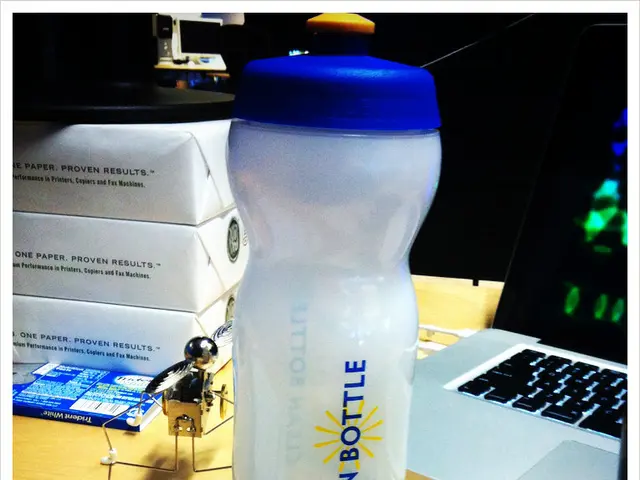Workplace monitoring takes a new turn with electronic face tattoos designed to assess employees' mental stress levels.
In a groundbreaking leap, scientists have unveiled an electronic, temporary face tattoo that measures mental workload. This game-changing innovation aims to flag when individuals in high-stress positions, like air traffic controllers, need a break, a move prompted by the seemingly endless stream of high-profile disasters due to overworked personnel.
One such incident occurred in January, when a mid-air collision between a helicopter and a passenger plane claimed 55 lives. The mishap took place amid "abnormal" staffing at Reagan National Airport tower, with single air traffic controllers handling duties usually assigned to multiple controllers. These scenarios emphasize the necessity for better systems to gauge mental workload in jobs that demand intense focus.
The new "e-tattoo" is designed to get the job done. Developed by a group of researchers and published in the journal Device, the e-tattoo works by monitoring brain waves via the wearer's forehead. It offers a faster, more objective approach compared to current methods, which primarily rely on self-reporting - a method the researchers assert is not the most reliable, as "humans aren't so great at judging their own mental performance."
To gather brain activity data, the conventional approach involves electroencephalography (EEG), using carefully placed electrodes on the scalp. However, the new e-tattoo, created in collaboration by UT Austin's Nanshu Lu and fellow engineering professor Luis Sentis, employs a disposable, polymer-based, adhesive sticker customized to the wearer's face shape. The system also includes a lightweight battery and electrode system that records brainwaves from the user's forehead.
Brainwaves come in different frequencies, ranging from slower (delta and theta) to faster (alpha, beta, and gamma). Previous studies have linked distinct patterns of these brainwaves to degrees of mental workload.
Researchers conducted a pilot study on six participants, who wore the e-tattoo as they undertook a memory test that increased in difficulty in each round. The results? As the challenge intensified, participants' delta and theta waves increased in power, while their alpha, beta, and gamma waves decreased—an indication of increasing mental workload.
This data was then fed into a machine learning model, which estimated the mental workload each participant experienced at different task difficulties. The estimates were found to closely correlate with participants' self-reported workload as measured by the NASA Task Load Index, a questionnaire-based tool.
Though the new approach has some drawbacks, such as its limited recording capacity compared to traditional EEG methods, the researchers are optimistic about its future potential. Their next goal is to develop a neural network—another type of artificial intelligence model—and integrate it into the tattoo's Bluetooth chip. This would allow the e-tattoo to both record and analyze data entirely within the device, providing real-time mental workload assessment.
Whether for pilots, drivers, or supervisors of robotic systems, the developers see these sensors becoming integrated into high-pressure jobs very soon, promising to ensure optimal mental performance and enhance safety in critical environments.
The e-tattoo, a groundbreaking innovation in health-and-wellness technology, is designed to address mental-health concerns in the workplace-wellness sector, particularly in high-stress positions. By monitoring brain waves via a temporary, customized face tattoo, it aims to provide a faster and more objective approach to gauge mental workload, reducing the risk of human error and improving safety in critical environments.








